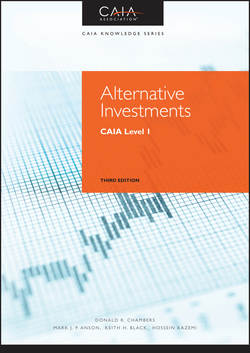Читать книгу Alternative Investments - Hossein Kazemi - Страница 16
На сайте Литреса книга снята с продажи.
PART One
Introduction to Alternative Investments
CHAPTER 1
What Is an Alternative Investment?
1.3 Structures among Alternative Investments
ОглавлениеThe previous sections defined the category of alternative investments by describing the investments that are or are not commonly thought of as alternative. But the question remains as to what the defining characteristics of investments are that cause them to be classified as alternative. For example, why is private equity considered an alternative investment but other equities are considered traditional investments? What is the key characteristic or attribute that differentiates these equities? The answer is that traditional equities are listed on major stock exchanges whereas private equity is not. We use the term structure to denote this attribute and others that differentiate traditional and alternative investments. In this case, traditional equities possess the characteristic of public ownership, which can be viewed as a type of institutional structure.
Because structures are a descriptive and definitional component of alternative investments, they are a crucial theme to our analysis of asset classes. Structures denote a related set of important aspects that identify investments and distinguish them from other investments. There are five primary types of structures:
1. Regulatory structures
2. Securities structures
3. Trading structures
4. Compensation structures
5. Institutional structures
For example, mutual funds are usually considered to be traditional investments, and hedge funds are usually considered to be alternative investments. But many hedge funds invest in the same underlying securities as many mutual funds (e.g., publicly traded equities). So if they have the same underlying investments, what distinguishes them? If we look at the funds in the context of the five structures, we can develop insight as to the underlying or fundamental differences. For example, hedge funds are less regulated, often have different compensation structures, and often have highly active and esoteric trading strategies or structures. Each of these attributes is viewed as a structure in this book.
When we analyze a particular type of investment, such as managed futures, we should think about the investment in the context of these various structures: Which structural aspects are unique to managed futures, how do particular structural aspects affect managed futures returns, and how do particular structural aspects cause us to need new or modified methods for our analysis?
